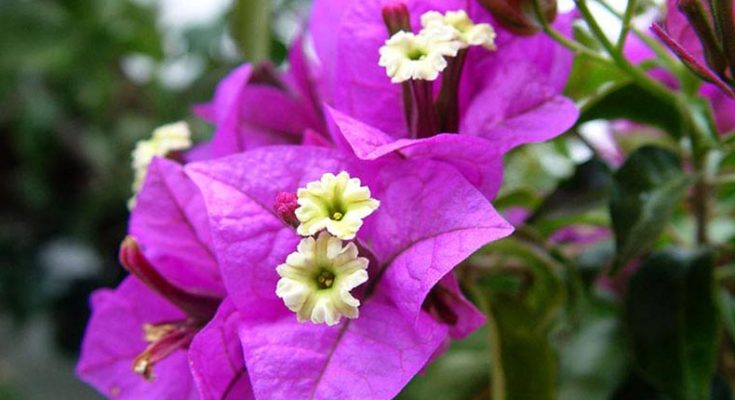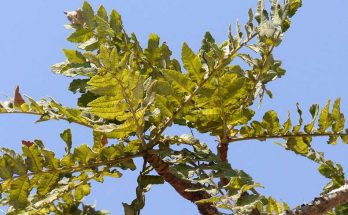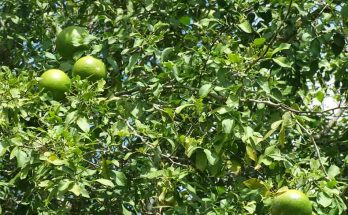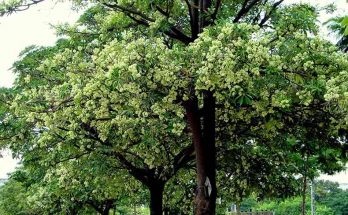Healing power of Bougainvillea. Image Courtesy – http://whatcomflowers.net
Bougainvillea is like ornamental vines, its species are thorny, creates bushes. Leaves are like spring leaves decorated near flowers. The height of the trees is generally found around 10-12 meters. Its flowers are seen in different bright colours like pink, magenta, purple, red, orange, yellow, white, etc. Scientific name of Bougainvillea is ‘Bougainvillea Glabra’ or, ‘Bougainvillea Spectabilis’. Bougainvillea is included in the Nyctaginaceae family. It has 28 sub-class and around 250 species. Bougainvillea is an evergreen class of tree grows where rainfall occurs throughout the year. The tree is deciduous if there is a dry season.
The plant has various names in various countries – in Spain, it is called ‘Buganvilla’, in Mexico and the Philippines it is named ‘Bugambilia’, in Colombia, it is ‘Veranera’, in Argentina, Uruguay, Brazil, and Bolivia it is named ‘Santa Rita’.
Some important constituents found in Bougainvillea:
Bougainvillea Glabra has some bio-chemical like ‘Pinitol’, ‘Betacyanine’, ‘Flavonoids’, ‘Alkaloids’ etc. Research showed that leaves of Bougainvillea have plastid-bound Oxalic Acid Oxidase. It also revealed that some compounds like ‘Ribosome inactivating proteins’, Amylase inhibitors’, ‘Pinitol’ and ‘Phenolic compounds’ are present in the plant. It was being disclosed after examining Petroleum extracts that Bougainvillea has ‘Glycosides’, ‘Anthraquinone’, ‘Terpenoids’, ‘Seponin’, ‘Fat’, ‘Tannin’ etc.
The plant has many therapeutic usages described in many studies several times. Leaves of this plant are used for diarrhea, excess acidity, cough, and sore throat.
Concentrated extract of this plant approximately 10 g in 4 glasses of water used for ‘Leucorrhea’, ‘Hepatitis’. Bougainvillea Glabra flowers are used for the treatment of low ‘Blood Pressure’.
Studies have shown that extract of Bougainvillea Spectabilis has the power to block the action of several bacteria like ‘Staphylococcus Aureus’, ‘Streptococcus Faecalis’, ‘Micrococcus Luteus’, ‘Escherichia Coli’, ‘Klebsiella Pneumonia’, ‘Shigella flexneri’ etc.
Read: Why Tulsi is called the Queen of Herbs?
A study of this extract solution in water combining Methanolic extract evolved significantly well glucose tolerance and intestinal ‘glucosidase’ activity comparatively reduced. It developed insulin-producing cells and the development of plasma insulin was observed. Results of the study indicated that significant development of ‘nutraceutical’ treatment for Diabetes was yet to progress.
The result of the research showed that leaf extract of Bougainvillea has adverse effects on the reproductive organs of male and female mice. It was observed that male mice had more ‘degeneration’ of gonads with lessen sperm count and ‘titer of testosterone’. While in the case of female mice, the reproductive cycle is extended by 1-2 days.
The herbal plant is named gently poisonous to puppies. This implies that a puppy might possibly experience reactions from eating bougainvillea. The most well-known reaction of a canine eating its extract gastrointestinal problems including queasiness, spewing, or loose bowels.
Bougainvillea Spectabilis has a source of ‘Pinitol’ which is used in the treatment of metabolic diseases such as ‘insulin-resistant diabetes. Dr. U. K. Tiwari, Herbal Scientist said that the uniqueness and strength of the plant were effective due to the presence of ‘Pinitol’, which has an effect like insulin and was mainly functional for those people who were resistant to insulin. Practically, they had no other options left.
Research work was done on Bougainvillea to examine the ‘Hypoglycemic’ and ‘Antilipidemic’ effects of this plant. It was made with extract of Bougainvillea Glabra on ‘alloxan-induced 25 male Wistar rats.
Diabetes mellitus remains a significant wellbeing issue worldwide. In the previous decade, the United States has recorded a 33% rise in diabetic cases. Regardless of the noteworthy accomplishments in treatment modalities and preventive measures, its commonness has risen exponentially in the most recent decade. As a result of these constraints, the requirement of new avenues is needed. More successful treatments would enhance control on diabetes, furthermore diminish related danger components like ‘Hyperlipidemia’, ‘Hypertension’ etc. A number of alternative therapies have developed with ‘Herbal Medicine’. This is the reason, the utilization of herbs has dramatically multiplied throughout the most recent decade.
Chart:

Conclusion:
Taking everything into account, the present study has demonstrated that the fluid concentrate of the leaves of Bougainvillea Glabra has against diabetes and is hostile to lipidemic impacts. Similarly, these perceptions are legitimized the customary employments of the plant leaves for the treatment of diabetes.
Caution: Some research says that the inexpedient application of bougainvillea leaves may develop infertility problems.
Reference: Report on scientific studies – Anti-diabetic Properties of the Aqueous Leaf Extract of Bougainvillea Glabra (Glory of the Garden) on Alloxan-Induced Diabetic Rats by Department of Physiology, Faculty of Basic Medical Sciences College of Health Sciences, University of Ilorin, P.M.B. 1515, Ilorin, Nigeria.





